Kwila, Johnstone River Teak, Scrub Mahogany
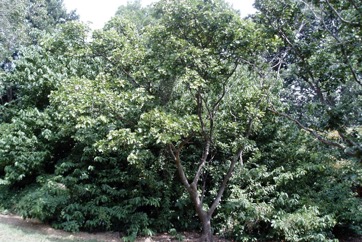
It is a tropical plant. It usually occurs in the lowlands close to the coast. It can tolerate wet soils. It can grow in areas which are occasionally flooded. It is often on limestone. It can grow on atolls. It suits a pH of 6.1 to over 7.4. It can tolerate salty soils. It can tolerate salt spray. It grows on the side of tidal rivers. It is usually in areas with a rainfall of 1500-2300 mm per year. It is drought resistant. It grows best with temperatures around 26-27°C. It cannot tolerate temperatures below 17°C. It grows best in full sun. In Papua New Guinea it grows from sea level to 450 m altitude. In Madagascar it is usually below 50 m altitude.
Also known as:
Ai-besi, Bon, Borneo teak, Choyo, Cohu, Dort, Fara, Faux teck, Fehi, Fesi, Go nuoc, Gugura, Huhula, Iban, Ifet, Ifilele, Ifit, Intsy, Ipil, Ipil-talao, Kebuk, Kivili, Kohu, Kubok, Kubuk, Kuren, Maka, Malapari, Marbau ayer, Mboan, Menau, Merbau asam, Merbau changkat, Merbau laut, Mityanmis, Moluccan ironwood, N'tor, Nator, Natora, Nkengia, Nyia nwola, Pohon merbau asam, Pohon merbau borneo, Pra du tale, Rurula, Saga-lun, Show, Tagal-tugas, Tat-talum, Thort, Tor, Tora, Tuamis, U'ula, Vehi, Vei, Vesi dina, Vesi, Vesiwai, Wantal, Zolt, Zort
Synonyms
- Afzelia bijuga (Colebr.) A. Gray
- Afzelia cambodiensis Hance
- Afzelia retusa Kurz.
- Albizia bijuga (Colebr.) A. Gray
- Eperua decandra Blanco
- Intsia amboinensis Thouars. ex DC.
- Intsia cambodiensis (Hance) Pierre
- Intsia retusa (Kurz.) O. Kuntze
- Macrolobium bijugum Colebr.
Edible Portion
- Seeds, Leaves
Where does Kwila grow?
Found in: American Samoa, Asia, Australia, British Indian Ocean Terr., BIOT, Cambodia, Caroline Islands, East Africa, East Timor, Fiji, Guam, India, Indian Ocean Islands, Indochina, Indonesia, Madagascar, Malaysia, Mariana Islands, Marshall Islands, Micronesia, Mozambique, Myanmar, New Caledonia, Pacific, Palau, Papua New Guinea, PNG, Philippines, Pohnpei, Polynesia, Rotuma, Samoa, SE Asia, Solomon Islands, Tanzania, Thailand, Timor-Leste, Tonga, Vanuatu, Vietnam, Wallis and Futuna, Yap
Notes: The wood is very hard and is called ironwood. There are 2 Intsia species and others have now been transferred to Afzelia. The bark and leaves are used in medicine. Also as Caesalpinaceae.
Status: It is a famine food. The tree is an important timber species.
Growing Kwila, Johnstone River Teak, Scrub Mahogany
Cultivation: Plants are grown from seed. The seed need to be treated to break the hard seed coat. They can also be grown by cuttings.
Edible Uses: CAUTION: The fruit are poisonous. The seeds can be made edible by careful preparation. This includes shelling then soaking them in water for 3-4 days and then boiling them.
Production: It grows at a moderate rate. It can grow 1.5 m in a year. It can take 75-80 years to reach maturity.
Nutrition Info
per 100g edible portion| Edible Part | Energy (kcal) | Protein (g) | Iron (mg) | Vitamin A (ug) | Vitamin c (mg) | Zinc (mg) | % Water |
|---|---|---|---|---|---|---|---|
| - | - | - | - | - | - |
Kwila, Johnstone River Teak, Scrub Mahogany Photos

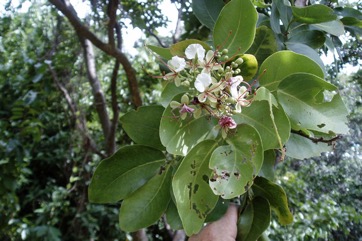
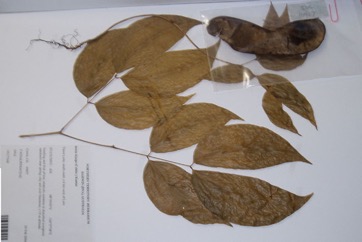
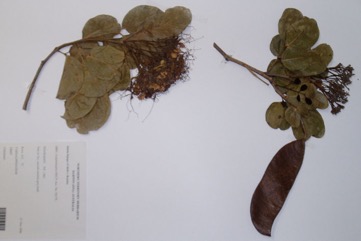
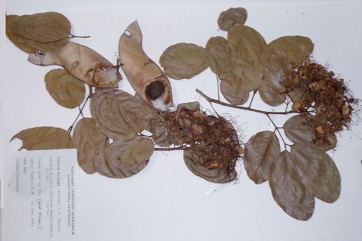
References
Argent, G et al, nd, Manual of the Larger and More important non Dipterocarp Trees of Central Kalimantan Indonesia. Volume 2 Forest Research Institute, Samarinda, Indonesia. p 357
Barwick, M., 2004, Tropical and Subtropical Trees. A Worldwide Encyclopedic Guide. Thames and Hudson p 227
Borrell, O.W., 1989, An Annotated Checklist of the Flora of Kairiru Island, New Guinea. Marcellin College, Victoria Australia. p 93
Burkill, I.H., 1966, A Dictionary of the Economic Products of the Malay Peninsula. Ministry of Agriculture and Cooperatives, Kuala Lumpur, Malaysia. Vol 2 (I-Z) p 1264
Burkill, I.H., 1966, A Dictionary of the Economic Products of the Malay Peninsula. Ministry of Agriculture and Cooperatives, Kuala Lumpur, Malaysia. Vol 2 (I-Z) p 1265 (As Intsia retusa)
Cabalion, P. and Morat, P., 1983, Introduction le vegetation, la flore et aux noms vernaculaires de l'ile de Pentcoste (Vanuatu), In: Journal d'agriculture traditionnelle et de botanique appliquee JATBA Vol. 30, 3-4
Carig, Elizabeth T., 2020, Guidebook on Native Trees within the Quirino Forest Landscape. Plaridel, Bulacan, St. Andrew Publishing House. p 62
Cooper, W. and Cooper, W., 2004, Fruits of the Australian Tropical Rainforest. Nokomis Editions, Victoria, Australia. p 103
Cowie, I, 2006, A Survey of Flora and vegetation of the proposed Jaco-Tutuala-Lore National Park. Timor-Lests (East Timor) www.territorystories.nt/gov.au p 45
East African Herbarium records, 1981,
Elevitch, C.R.(ed.), 2006, Traditional Trees of the Pacific Islands: Their Culture, Environment and Use. Permanent Agriculture Resources, Holualoa, Hawaii. p 425
Elliot, W.R., & Jones, D.L., 1990, Encyclopedia of Australian Plants suitable for cultivation. Vol 5. Lothian. p 425
Flora of Australia Volume 12, Mimosaceae (excl. Acacia) Caesalpiniaceae. Melbourne: CSIRO Australia (1998) p 172, 173
Franklin, J., Keppel, G., & Whistler, W., 2008, The vegetation and flora of Lakeba, Nayau and Aiwa Islands, Central Lau Group, Fiji. Micronesica 40(1/2): 169–225, 2008
GTZ 1996, A Guide to some Indigenous Fijian Trees. GTZ Suva. p 203
Havel, J.J., 1975, Forest Botany, Volume 3 Part 2 Botanical taxonomy. Papua New Guinea Department of Forests, p 106
http://palaeoworks.anu.edu.au/Nuno_PhD/04.pdf re Timor
Jones D, L, 1986, Ornamental Rainforest Plants in Australia, Reed Books, p 157
Kitalong, A. H., DeMeo, R. A., & Holm, T., 2013, A Field Guide to the Native Trees of Palau. 2nd edition. USDA p92
Liefting, A., et al, Samoan plant names. http://en.wikipedia.org
May, R.J., 1984, Kaikai Aniani. A Guide to Bush Foods Markets and Culinary Arts of Papua New Guinea. Robert Brown and Associates. p 62
Menninger, E.A., 1977, Edible Nuts of the World. Horticultural Books. Florida p 95
Peekel, P.G., 1984, (Translation E.E.Henty), Flora of the Bismarck Archipelago for Naturalists, Division of Botany, Lae, PNG. p 214, 215
Peters, C. R., O'Brien, E. M., and Drummond, R.B., 1992, Edible Wild plants of Sub-saharan Africa. Kew. p 123
Pham-Hoang Ho, 1999, An Illustrated Flora of Vietnam. Nha Xuat Ban Tre. p 867
Reitveld, S., 2013, The Animals and Plants of the Zazamalala Forest in Western Madagascar. p 88
Revis. gen. pl. 1:192. 1891
Schatz, G.E., 2001, Generic Tree Flora of Madagascar. Royal Botanical Gardens, Kew and Missouri Botanical Garden. p 194
Smith, A.C., 1985, Flora Vitiensis Nova, Lawaii, Kuai, Hawaii, Volume 3 p 134
Sukarya, D. G., (Ed.) 2013, 3,500 Plant Species of the Botanic Gardens of Indonesia. LIPI p 337
Topp, J. M. W., 1988, An Annotated Check List of the Flora of Diego Garcia, British Ocean Territory. Atoll Research Bulletin No. 313
Townsend, K., 1994, Across the Top. Gardening with Australian Plants in the tropics. Society for Growing Australian Plants, Townsville Branch Inc. p 263
Verdcourt, B., 1979, Manual of New Guinea Legumes. Botany Bulletin No 11, Division of Botany, Lae, Papua New Guinea. p 91 (Drawing)
Whistler, W.A., 2004, Rainforest Trees of Samoa. Isle Botanica Honolulu, Hawaii. p 73
Williams, K.A.W., 1999, Native Plants of Queensland Volume 4. Keith A.W. Williams North Ipswich, Australia. p 234
World Checklist of Useful Plant Species 2020. Royal Botanic Gardens, Kew
www.worldagroforestrycentre.org/treedb/
Yuncker, T.G., 1959, Plants of Tonga, Bernice P. Bishop Museum, Hawaii, Bulletin 220. p 134